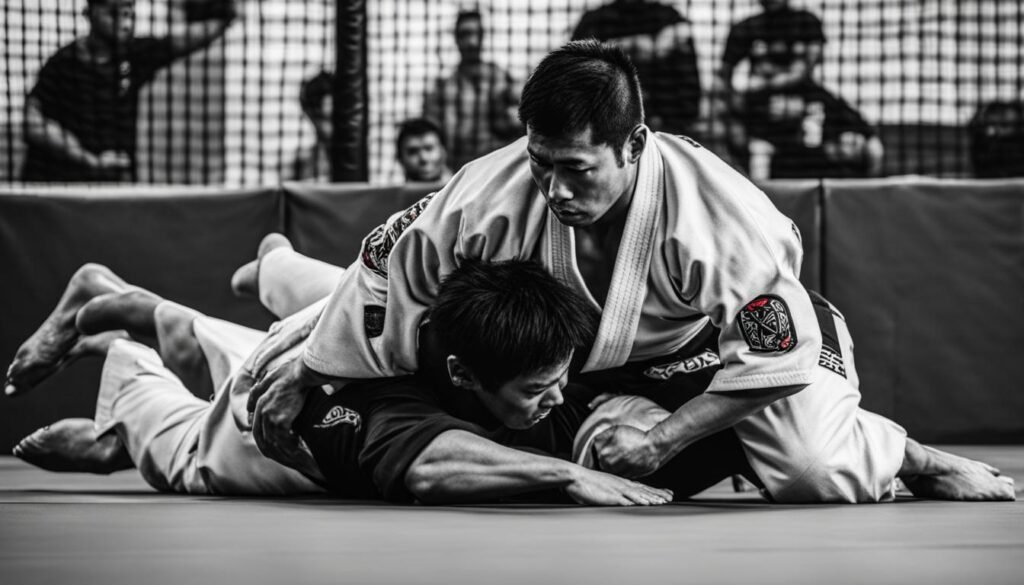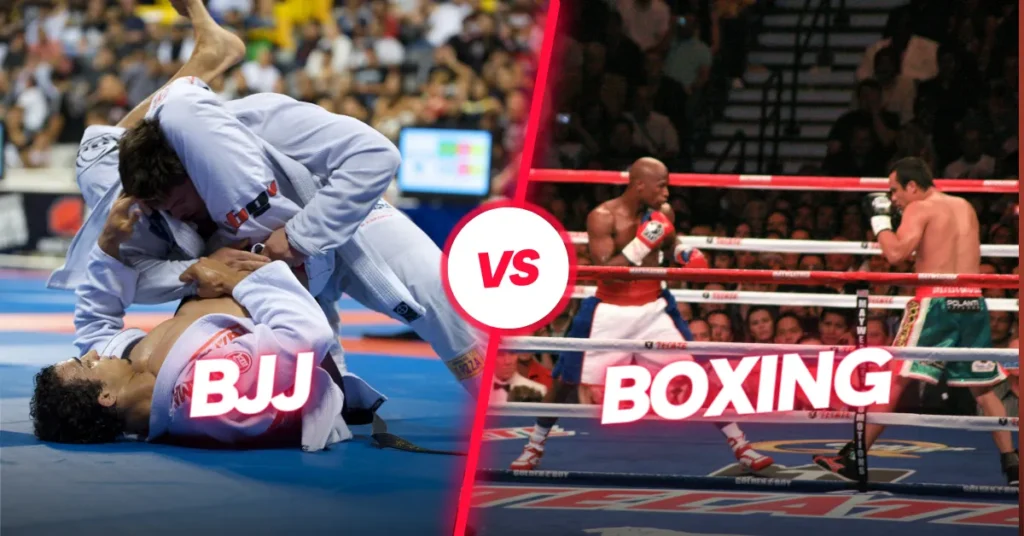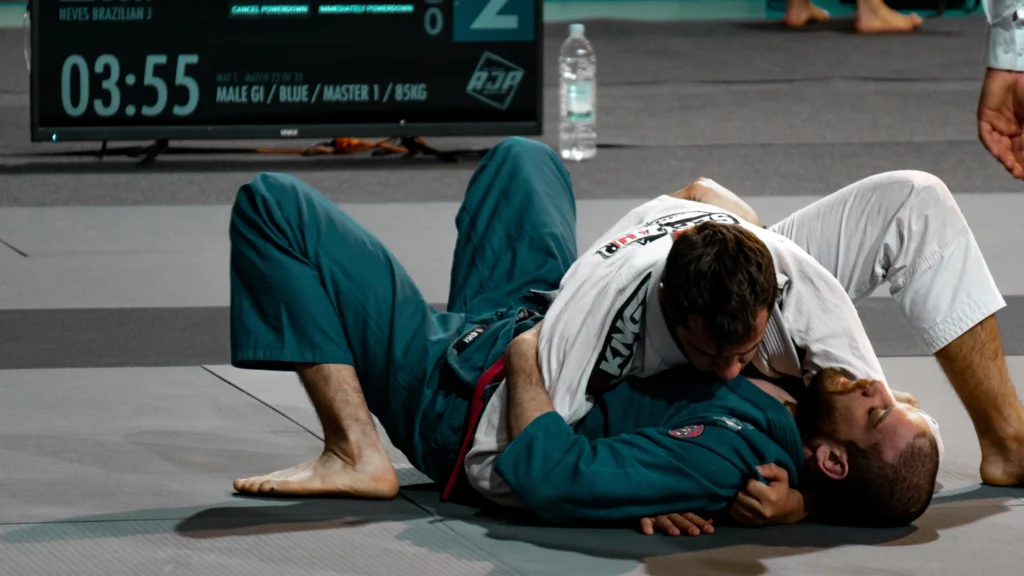Japanese jiu-jitsu and Brazilian jiu-jitsu are two distinct martial arts that have a common origin in jiu-jitsu. While they may sound similar, these two styles of jiu-jitsu have evolved differently over time, each with its own unique characteristics and techniques. Understanding the differences between Japanese and Brazilian jiu-jitsu is essential for those looking to explore the world of jiu-jitsu and choose the style that best suits their interests and goals.
Key Takeaways
- Japanese jiu-jitsu and Brazilian jiu-jitsu are separate martial arts with a common origin.
- Japanese jiu-jitsu focuses on self-defense and incorporates striking, grappling, and weapon techniques.
- Brazilian jiu-jitsu primarily emphasizes ground-fighting and submissions, with an emphasis on self-defense and sport competition.
- The techniques, rules, and belt systems of Japanese and Brazilian jiu-jitsu differ significantly.
- When choosing between the two, consider your goals, preferences, and training objectives.
A Brief History of Japanese Jiu-Jitsu
Japanese jiu-jitsu, also known as jujutsu, has a rich and ancient history that can be traced back to the samurai warriors of Japan. Developed as a form of hand-to-hand combat for the samurai when they were without their weapons, jiu-jitsu became an essential skill for survival on the battlefield.
The precise origins of Japanese jiu-jitsu are shrouded in mystery, but it is believed to have evolved over centuries of samurai warfare. During this period, jiu-jitsu techniques were refined and organized into a structured martial art specifically for wars and battles.
In the 17th century, the term jujutsu emerged to describe the grappling martial arts practiced by the samurai. Traditional jiu-jitsu encompassed a wide range of techniques, including striking, grappling, joint locks, and the use of weapons such as clubs and knives.
“Japanese jiu-jitsu, or jujutsu, originated from the ancient samurai warriors and evolved into a comprehensive system of hand-to-hand combat.”
Throughout its history, Japanese jiu-jitsu has been passed down through generations, preserving the ancient techniques and principles of the art. Today, modern Japanese jiu-jitsu continues to be practiced as a martial art and a means of self-defense.
By examining the history of Japanese jiu-jitsu, we gain a deeper understanding of its roots in the ancient samurai warriors and the evolution of this martial art into a comprehensive system of hand-to-hand combat.
Book Recommendation
Amazing book if you want to learn about the history, philosophy of Japanese Jiujitsu!
Origins of Brazilian Jiu-Jitsu
Brazilian jiu-jitsu, a martial art that has gained global recognition, has its origins in judo rather than traditional jiu-jitsu. It was developed in Brazil during the early 20th century by Carlos Gracie, who learned the art from Mitsuo Maeda, a renowned judo master.
Maeda made modifications to judo, placing a greater emphasis on ground-fighting techniques, and passed on this knowledge to Carlos Gracie. Carlos, along with his brother Helio Gracie, further refined and adapted the techniques, ultimately creating what is now known as Brazilian jiu-jitsu.
“Brazilian jiu-jitsu was born out of the innovation and dedication of the Gracie family. Their relentless pursuit and passion for refining the art has shaped it into the dynamic and effective martial art we know today.”
The Gracie family played a pivotal role in popularizing and disseminating Brazilian jiu-jitsu around the world. The art gained significant attention after being showcased in the early competitions of the Ultimate Fighting Championship (UFC), where the Gracie family’s dominance demonstrated the effectiveness of Brazilian jiu-jitsu in real combat situations. Since then, Brazilian jiu-jitsu has continued to evolve, with practitioners constantly exploring new techniques and strategies.
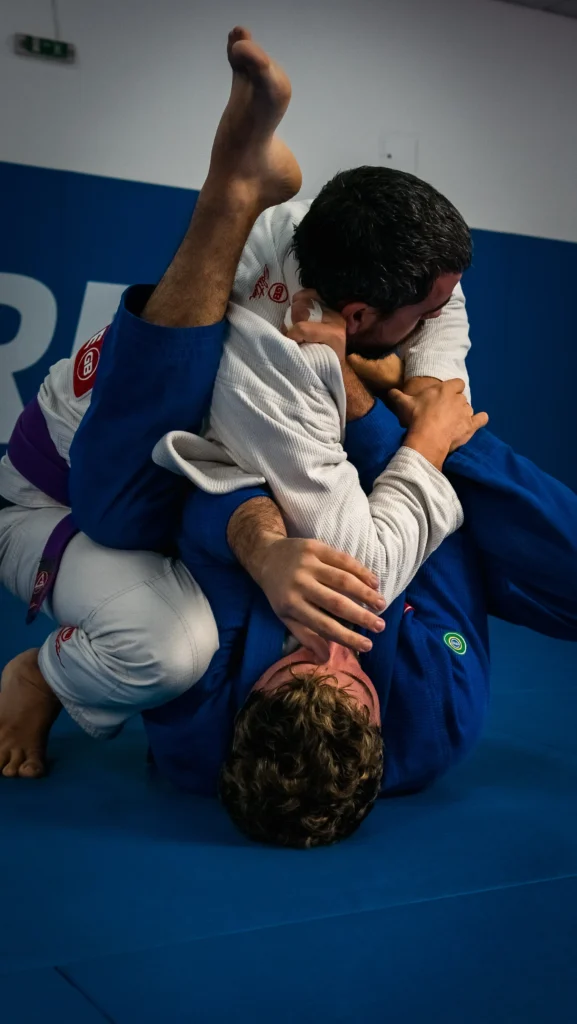
Book Recommendation
If you want to learn more about the history of bjj, Mastering Jujitsu by Renzo Gracie is a great choice!
The Key Differences Between BJJ and JJJ
The major differences between Brazilian jiu-jitsu (BJJ) and Japanese jiu-jitsu (JJJ) can be found in their purpose of training, fighting styles, techniques, rules and competition opportunities, as well as their belt and promotion systems.
While Japanese jiu-jitsu focuses on self-defense and defeating opponents using a combination of striking and grappling techniques, BJJ is primarily focused on ground-fighting and submissions, with an emphasis on avoiding causing harm to opponents.
The techniques used in both martial arts also differ, with Japanese jiu-jitsu having a broader range of techniques, including strikes, throws, joint locks, and chokes, while BJJ mainly focuses on submissions and positional grappling.
The rules and competition opportunities also vary, with BJJ having a more active sports community and organized competitions, while JJJ is less focused on sport.
The belt and promotion systems are also different, with BJJ using a four-belt system and promotion based on technical knowledge, sparring proficiency, and time, while JJJ often follows a belt system similar to judo and has a formal grading process for promotions.
| Comparison | BJJ | JJJ |
|---|---|---|
| Purpose of Training | Ground-fighting, submissions, self-defense | Self-defense, striking, grappling |
| Fighting Styles | Emphasizes ground-fighting, positional grappling | Combination of striking and grappling |
| Techniques | Mainly submissions and positional grappling | Broad range including strikes, throws, joint locks, and chokes |
| Rules and Competition | Active sports community, organized competitions | Less focused on sport, fewer competitions |
| Belt and Promotion System | Four-belt system, promotion based on technical knowledge, sparring proficiency, and time | Belt system similar to judo, formal grading process |
Classes, Gyms, and Schools
When it comes to training in Japanese jiu-jitsu or Brazilian jiu-jitsu, there are various options available. Many gyms and schools offer classes in both martial arts, catering to different training preferences.
Brazilian jiu-jitsu (BJJ) has gained significant popularity worldwide, and there is a larger number of dedicated BJJ gyms that focus on sport and competition training. These gyms provide a dynamic and competitive environment for individuals looking to test their skills and participate in organized competitions.
On the other hand, Japanese jiu-jitsu (JJJ) schools may adopt a more traditional approach, focusing on self-defense and preserving the techniques and principles of the art. These schools often emphasize the historical aspects of Japanese jiu-jitsu and provide a comprehensive training experience that includes striking, grappling, and weapons techniques.
When choosing a gym or school for jiu-jitsu training, it’s important to consider your goals and preferences. If you are interested in sport competition and a dynamic training environment, a BJJ gym may be the right choice. However, if you are looking for a more traditional and holistic approach to martial arts with a focus on self-defense, a Japanese jiu-jitsu school might be the better option.
Ultimately, the choice between Brazilian jiu-jitsu and Japanese jiu-jitsu depends on your training objectives, whether it be self-defense, sport competition, or overall fitness. It’s always a good idea to visit different gyms or schools, talk to instructors, and try out a few classes before committing to a specific training program.
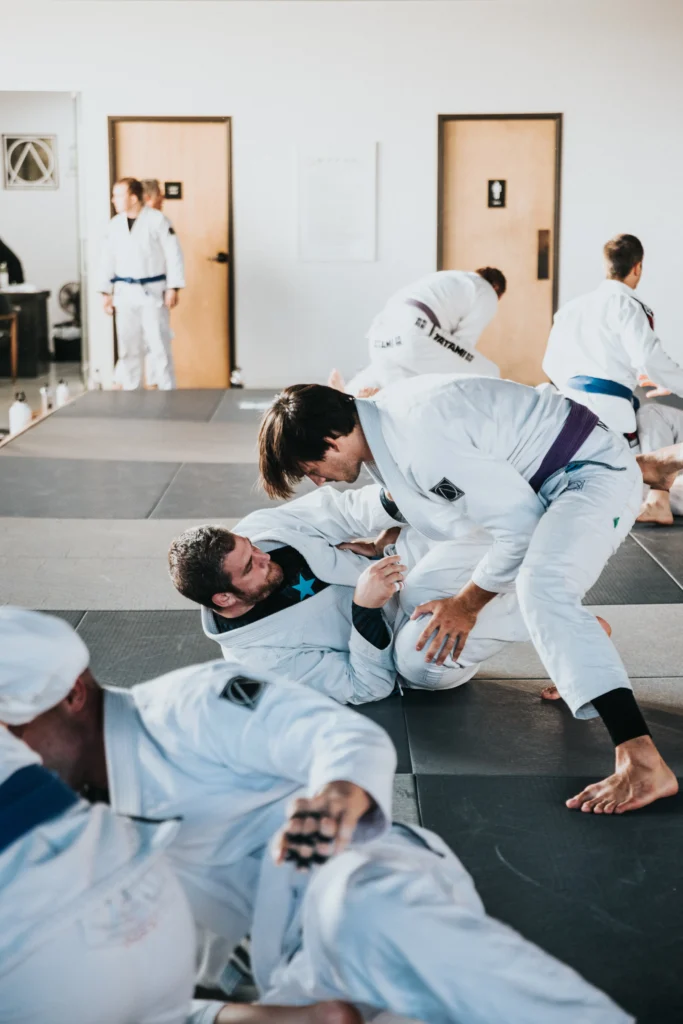
Conclusion
In conclusion, Japanese jiu-jitsu and Brazilian jiu-jitsu are two distinct martial arts that have diverged from their common origin in jiu-jitsu. Japanese jiu-jitsu has a rich history dating back over 2000 years, developed for self-defense in wars and battles. It incorporates striking and grappling techniques, as well as the use of weapons. On the other hand, Brazilian jiu-jitsu originated from judo in Brazil and primarily focuses on ground-fighting and submissions, with a greater emphasis on sport competition.
While both martial arts offer valuable training experiences and can provide practical self-defense skills, they have their own unique styles and approaches. Japanese jiu-jitsu places emphasis on self-defense and includes a broader range of techniques, while Brazilian jiu-jitsu hones in on ground-fighting and submissions.
Ultimately, the choice between Japanese jiu-jitsu and Brazilian jiu-jitsu depends on individual preferences, goals, and training objectives. Some may prefer the traditional aspects and diverse skill set of Japanese jiu-jitsu, while others may gravitate towards the sport-oriented nature of Brazilian jiu-jitsu. It is essential to consider one’s personal interests, fitness goals, and desired learning outcomes when deciding which martial art to pursue.
FAQ
What is the difference between Japanese jiu-jitsu and Brazilian jiu-jitsu?
Japanese jiu-jitsu incorporates striking and grappling techniques, as well as the use of weapons, while Brazilian jiu-jitsu primarily focuses on ground-fighting and submissions.
What is the history of Japanese jiu-jitsu?
Japanese jiu-jitsu has a history that dates back over 2000 years and was originally developed for self-defense in wars and battles. It includes both striking and grappling techniques, as well as the use of weapons.
How did Brazilian jiu-jitsu originate?
Brazilian jiu-jitsu originated from judo and was developed in Brazil in the early 20th century by Carlos Gracie, who was taught by Mitsuo Maeda, a judo master. It focuses primarily on ground-fighting and submissions, with an emphasis on self-defense rather than causing harm to opponents.
What are the key differences between Brazilian jiu-jitsu and Japanese jiu-jitsu?
The key differences include the purpose of training, fighting styles, techniques, rules and competition opportunities, as well as the belt and promotion systems. Japanese jiu-jitsu focuses on self-defense and uses a combination of striking and grappling techniques, while Brazilian jiu-jitsu primarily focuses on ground-fighting and submissions.
Where can I find classes to train in Japanese jiu-jitsu or Brazilian jiu-jitsu?
Many gyms and schools offer classes in both martial arts. Brazilian jiu-jitsu has gained significant popularity worldwide and has a larger number of dedicated BJJ gyms that focus on sport and competition training. Japanese jiu-jitsu schools may be more traditional in their approach, focusing on self-defense and preserving the techniques and principles of the art.
What is better BJJ or JJJ?
The preference between Brazilian Jiu-Jitsu (BJJ) and Japanese Jiu-Jitsu (JJJ) depends on personal goals and interests. BJJ excels in ground grappling, while JJJ has a broader focus, including strikes and throws.
Is there a difference between Brazilian jiu-jitsu and Jiu Jitsu?
Yes, there is a difference. Brazilian Jiu-Jitsu (BJJ) specializes in ground grappling, originating from Judo. Japanese Jiu-Jitsu (JJJ) covers a wider range, including strikes, throws, and weapons.
How many years does it take to master Japanese Jiu Jitsu?
Achieving a black belt (shodan) in Japanese Jiu-Jitsu (JJJ) may take up to seven years, with many practitioners reaching this level in four to five years. Mastery is an ongoing process.
Is BJJ the toughest sport?
The toughness of Brazilian Jiu-Jitsu (BJJ) is subjective, depending on individual perspectives. BJJ is known for its physical and mental challenges, but opinions on the toughest sport vary based on personal preferences and experiences.

